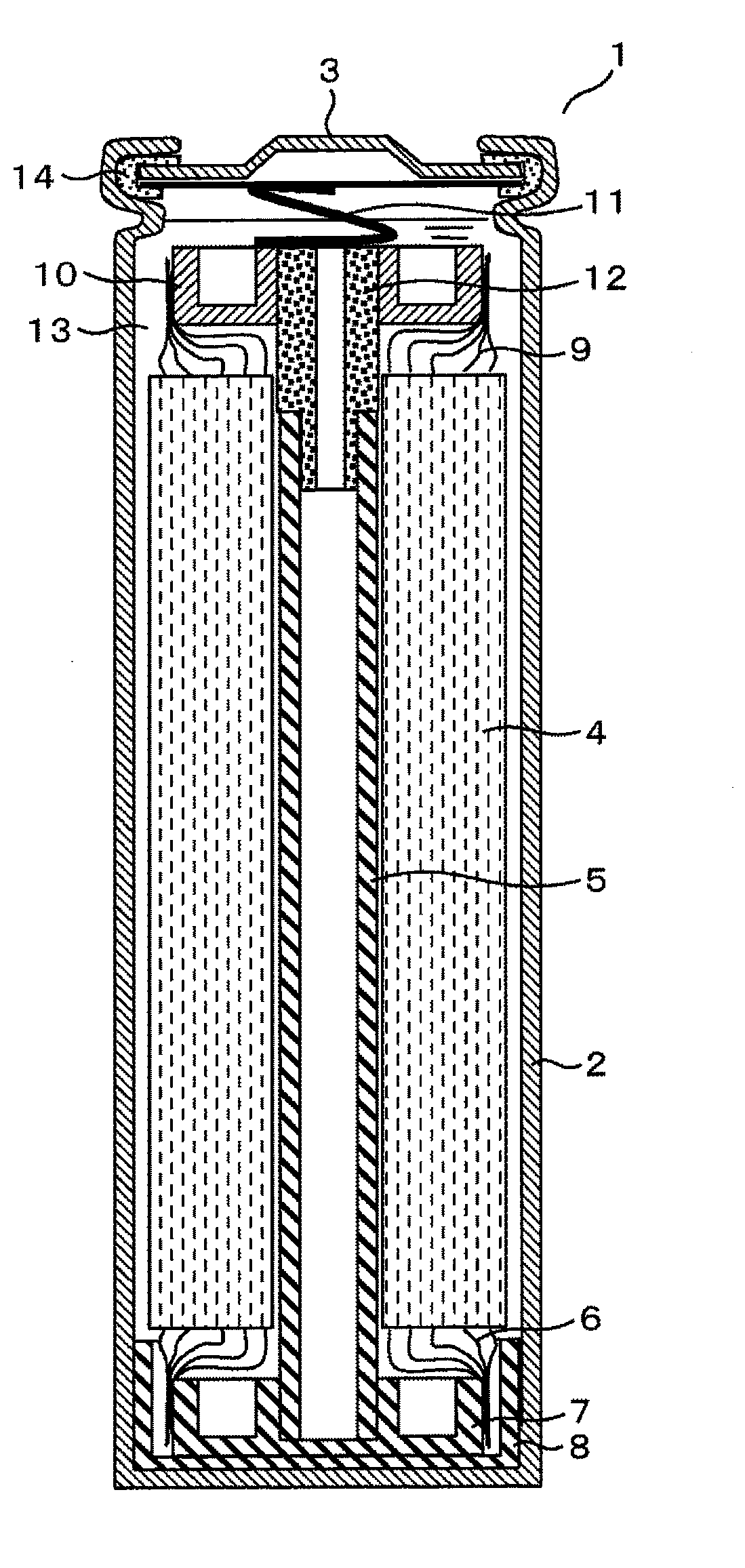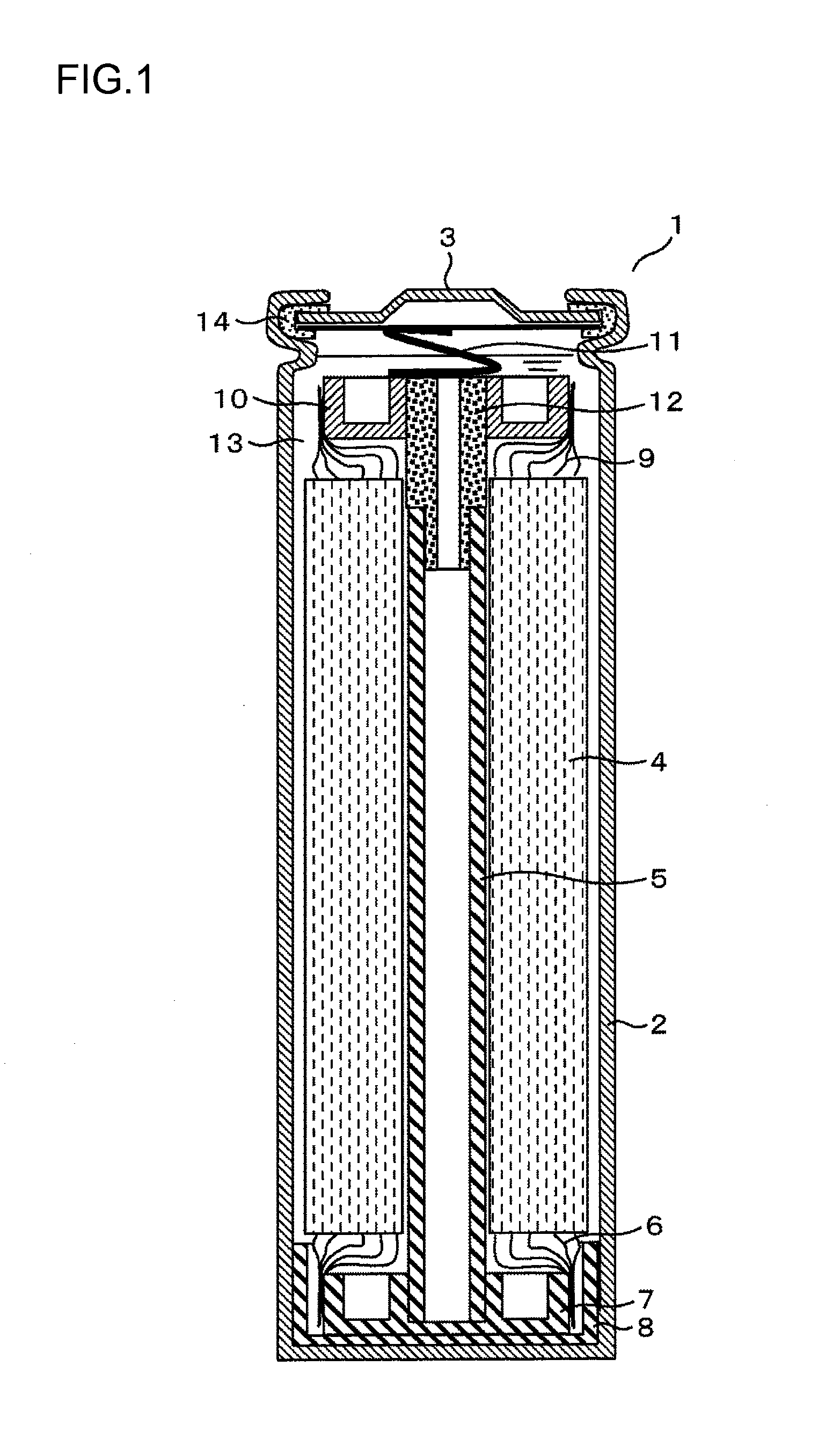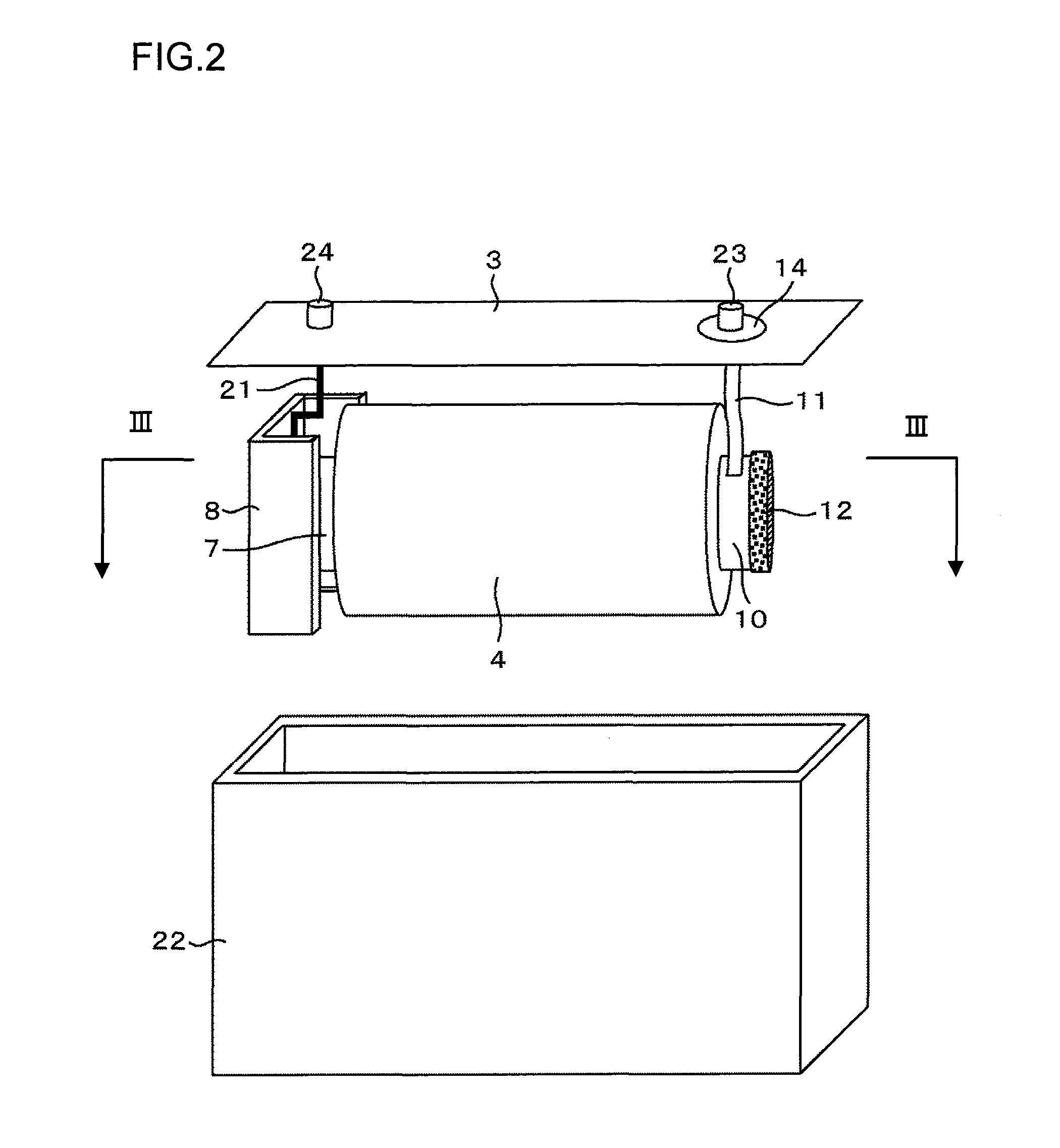Lithium-Ion Secondary Battery
a secondary battery and lithium-ion technology, applied in the direction of cell components, final product manufacturing, sustainable manufacturing/processing, etc., can solve the problems of poor heat-absorbing response, corrosion of the electrode terminal, and significant restrictions on the integration system constituted with a plurality of such batteries, and achieve the effect of high efficiency
- Summary
- Abstract
- Description
- Claims
- Application Information
AI Technical Summary
Benefits of technology
Problems solved by technology
Method used
Image
Examples
embodiment 1
[0036]FIG. 1 is a schematic sectional view of the cylindrical lithium-ion secondary battery achieved in embodiment 1.
[0037]A lithium-ion secondary battery 1 in the embodiment includes a winding body 4 accommodated in the space formed by a steel-can (container) 2 and a top cap 3 and assumes a structure that allows heat generated at the winding body 4 during electrical charge / discharge to be dissipated to the outside by transmitting the heat to the steel-can 2.
[0038]It is to be noted that the winding body 4 is wrapped in a coil form around a cathode foil (cathode film) and an anode foil (anode film) via a porous separator that electrically separates them. In the cathode foil and the anode foil lithium ions can store and from the cathode foil and anode foil lithium ions can extract.
[0039]A center pin 5 is fitted at the center of the winding body 4, wound in a spiral form around the cathode electrode and the anode electrode, separated via the separator.
[0040]Numerous anode tabs 6 at the...
embodiment 2
[0065]While the lithium-ion secondary battery according to the present invention is provided as a cylindrical lithium-ion secondary battery 1 in embodiment 1, the present invention is not limited to this battery shape and may be adopted in a prismatic battery or another polygonal battery as long as the battery includes a winding body.
[0066]In reference to FIGS. 2 and 3, the prismatic lithium-ion secondary battery achieved in embodiment 2 is described in detail. FIG. 2 is an external view of the prismatic lithium-ion secondary battery achieved in embodiment 2, whereas FIG. 3 is a sectional view of the prismatic lithium-ion secondary battery in FIG. 2 taken through line III-III.
[0067]The prismatic lithium-ion secondary battery in the embodiment includes a flat winding body 4 disposed with a lateral orientation, with the anode electrode located on the left side of the figures and the cathode electrode located on the right side of the figures.
[0068]The winding body 4 in the embodiment w...
embodiment 3
[0092]In reference to FIGS. 4 through 7, the prismatic lithium-ion secondary battery achieved in embodiment 3 is described. It is to be noted that the same reference numerals are assigned to parts identical to or equivalent to those in embodiment 2 and the following explanation focuses on the features distinguishing embodiment 3 from embodiment 2. The lithium-ion secondary battery achieved in embodiment 3 is ideal in automotive applications.
[0093]In the description of the lithium-ion secondary battery 1 achieved in embodiment 3, a battery container of box type 22 sealed with the top cap 3 as shown in FIG. 4 is referred to as a battery canister. The lithium-ion secondary battery 1 includes a center pin (center core) 5 formed as an integrated flat plate. As shown in FIG. 6, the center pin 5 is formed as an integrated unit that includes a center pin body 5a, a heat sink 8 connected to the center pin body 5a at an anode electrode-side end thereof and a connecting member 12B connected to...
PUM
| Property | Measurement | Unit |
|---|---|---|
| porosity rate | aaaaa | aaaaa |
| area | aaaaa | aaaaa |
| electrically insulating | aaaaa | aaaaa |
Abstract
Description
Claims
Application Information
 Login to View More
Login to View More - R&D
- Intellectual Property
- Life Sciences
- Materials
- Tech Scout
- Unparalleled Data Quality
- Higher Quality Content
- 60% Fewer Hallucinations
Browse by: Latest US Patents, China's latest patents, Technical Efficacy Thesaurus, Application Domain, Technology Topic, Popular Technical Reports.
© 2025 PatSnap. All rights reserved.Legal|Privacy policy|Modern Slavery Act Transparency Statement|Sitemap|About US| Contact US: help@patsnap.com



